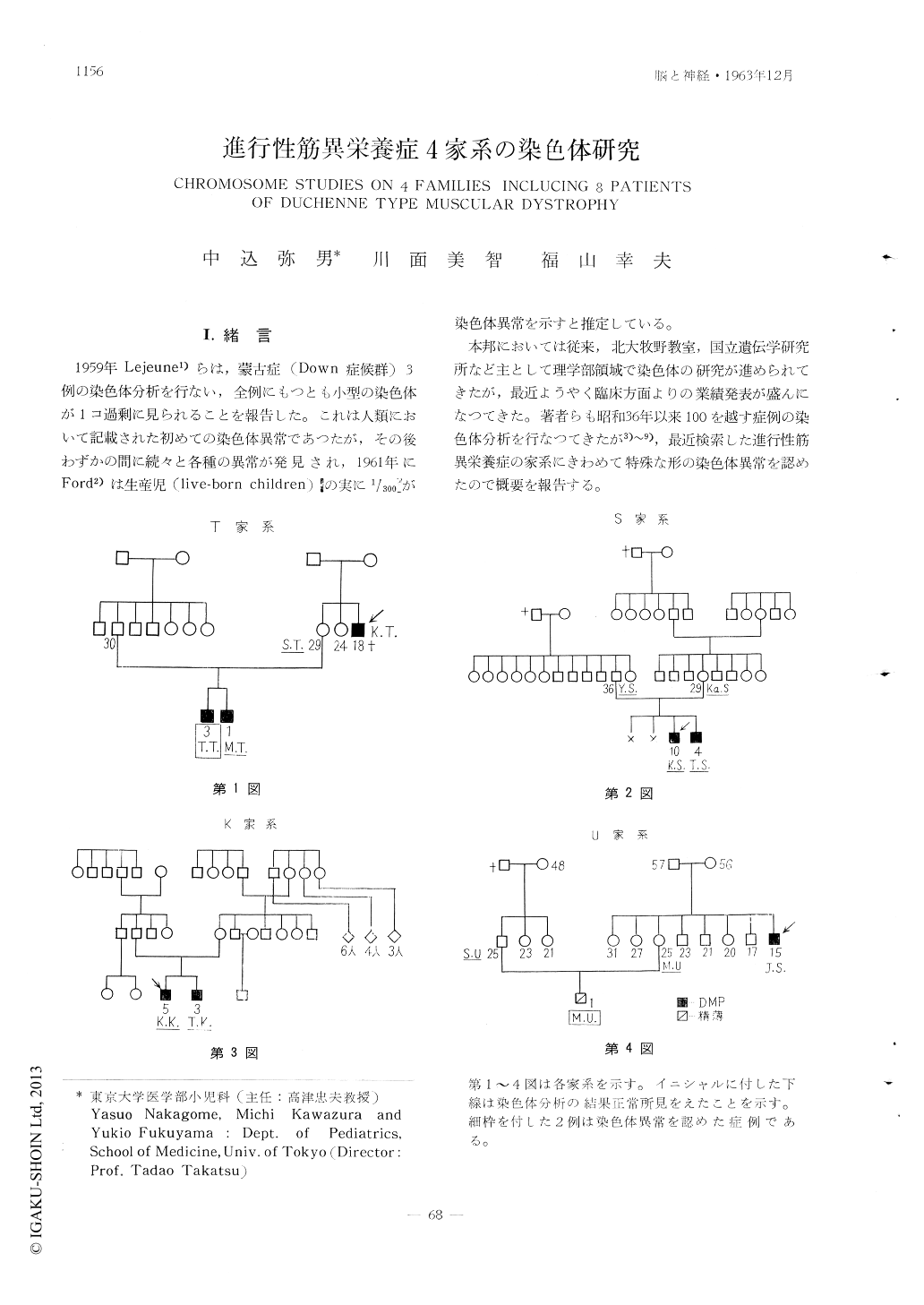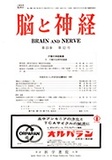Japanese
English
- 有料閲覧
- Abstract 文献概要
- 1ページ目 Look Inside
I.緒言
1959年Lejeune1)らは,蒙古症(Down症候群)3例の染色体分析を行ない,全例にもつとも小型の染色体が1コ過剰に見られることを報告した。これは人類において記載された初めての染色体異常であつたが,その後わずかの間に続々と各種の異常が発見され,1961年にFord2)は生産児(live-born children)の実に1/300が染色体異常を示すと推定している。
本邦においては従来,北大牧野教室,国立遺伝学研究所など主として理学部領域で染色体の研究が進められてきたが,最近ようやく臨床方面よりの業績発表が盛んになつてきた。著者らも昭和36年以来100を越す症例の染色体分析を行なつてきたが3)〜9),最近検索した進行性筋異栄養症の家系にきわめて特殊な形の染色体異常を認めたので概要を報告する。
In 4 families 8 boys were affected by Duc-henne type muscular dystrophy, and one of them died at 15 years of age. On 6 out of 7 living patients and 6 close relatives, chromo-some analysis were carried out according to the method of Moorhead,et al. (1960).
In pedigree charts (Fig. 1-4), Solid sym-bols show the patients, and a square drawn about slant line (case M.U.) shows a case of mental deficiency with hypotonia. Underlined symbols show cases with normal chromosome complements. Two cases (T.T. and M.U.) revealed chromosome abnormalities.
T.T. was a 3 years old boy with typical symptoms of Duchenne type muscular dystro-phy. His chromosome complement was 46, but one of the group G (21-22-Y) chromosomes was definitely small (Fg. 9 & 10). The ori-gin of this minute chromosome has been bri-efly discussed. On the basis of available evid-ences it seems likely that deleted chromoso-me is No. 22 or Y.
M.U. was a 1 year old boy. His maternal uncle was affected by Duchenne type mus-cular dystrophy. The patient showed muscle hypotonia and severely retarded mental development. The diagnosis of muscular dystrophy was denied on the basis of clinical and laboratory findings. Chromosome analysis revealed an extra chromosomal fragment in addition to the normal male karyotype (Fig. 12 & 13). The reported cases of non mongoloid trisomy G and partial trisomy were briefly reviewed.

Copyright © 1963, Igaku-Shoin Ltd. All rights reserved.


